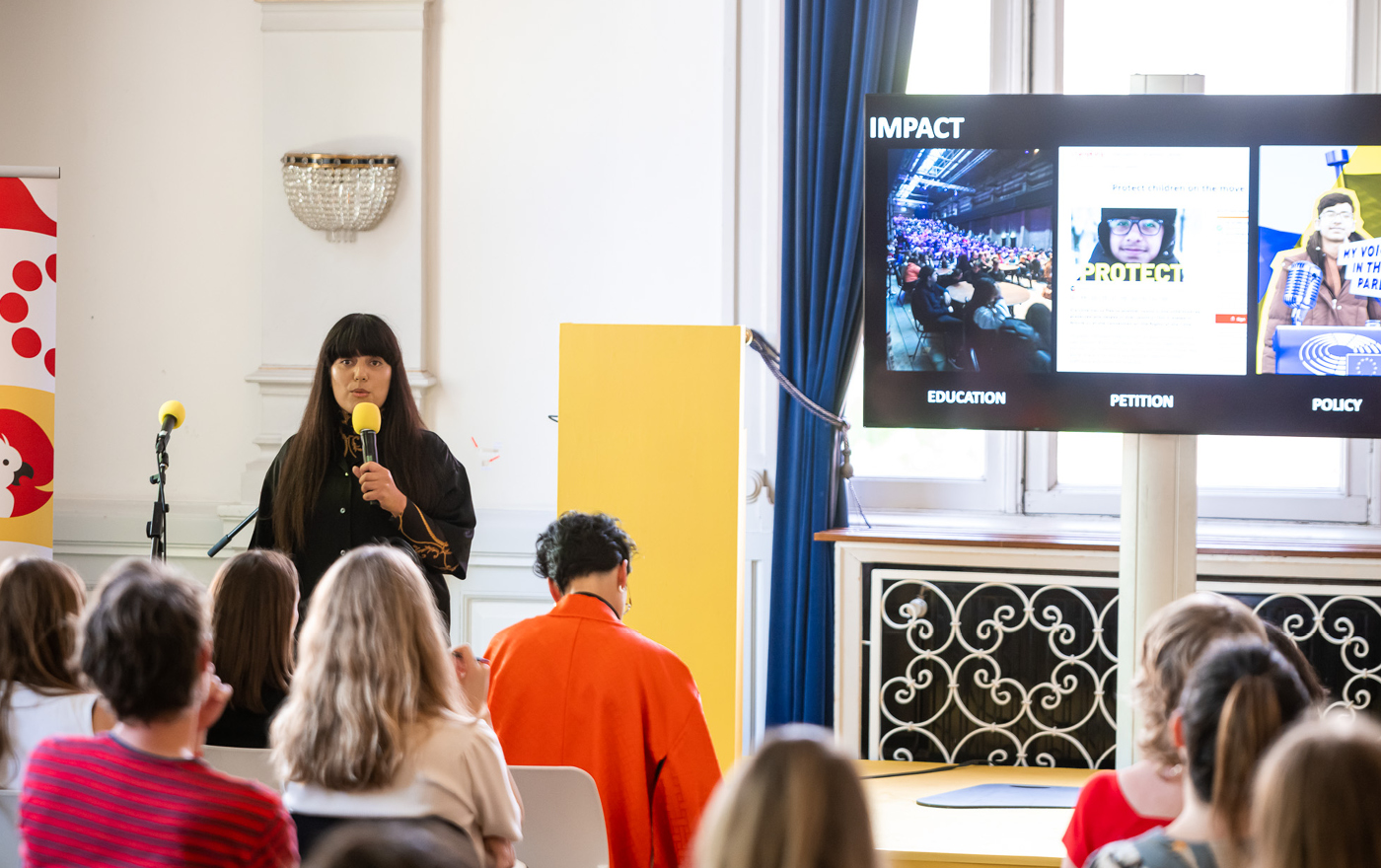In recent years, we’ve seen more creatives engaging with societal and environmental issues than ever. But while good intentions are easy to come by, real and lasting impact can be difficult to define. That’s why at WDCD Live Amsterdam 2022, we invited hundreds of designers, activists and industry experts to get down to brass tacks and discuss what it means to measure positive change as well as lead it. This was the topic at hand for at least two breakout sessions in the programme, which featured guest speakers from Drift, Omroep Zwart, Shadow Game and ADCN.
Data is quantitative, affection is not
During the Impact of Creativity session, participants gathered at the Plein Foyer of the Internationaal Theater Amsterdam to talk about their definition of social impact. Where companies, governments and NGOs increasingly use data and elaborate frameworks to measure, assess and report their impact on people and the environment, a science-based approach is new (and sometimes even controversial) in the creative sector. For many artists and designers, impact is less about selling products or collecting data, and more about raising awareness, enticing debate or changing behaviour. Can we even quantify these kinds of real-world effects? If not, what other frameworks or strategies could be helpful for creative changemakers?


Guided by moderator Saskia van Stein, participants discussed how ‘doing good’ relates to making money, what it takes to ‘create affection’ and the importance of understanding your cause. They were joined by Derk Loorbach, the director of Drift, a leading research institute and consultancy helping organisations make the transition to a more sustainable society. His institutional perspective laid the groundwork for Tina Farifteh, who followed up with an inspiring presentation about Shadow Game, a transmedia campaign that aims to amplify the voices of young refugees in Europe. Next up was Akwasi, the wordsmith and musician behind Dutch media platform Omroep Zwart, who shared his approach to storytelling and how it can bolster cultural and political movements.
‘I hope participants learned something new, whether that was a project they’d never heard of before, or gained a better understanding of some of the approaches to social impact measurement that could help them in their own fields,’ says Orla Hennessy, who also joined the session as a guest speaker. Drawing on her experience as Impact Manager for WDCD, she talked about adopting a more flexible approach to measuring change, rather than a one-size-fits all solution. ‘It’s a complex topic with many different approaches, not all of which would suit the arts and creative sector. But we learned it can be useful to marry the logic of social impact measurement with the magic of creativity.’
Creatives take the lead
Learning to balance responsibility with imagination was also a running theme in the Creative Leadership session which was co-hosted by expert coaches from ADCN, the Dutch Club for Creativity. More than fifty creative professionals, students and design enthusiasts joined the workshop, which started with a round of introductions and ice-breakers on what it means to be a leader in the creative industries. Hanging around the room were hand-painted banners adorned with common aspirations and affirmations: authentic, experimental, risk-taking. Using these as jumping off points, participants were then encouraged to explore the qualities, mindsets, and skills they think are essential for creative growth. They also discussed how this has evolved over the years, asking: What does it mean to be a trailblazer in today’s complex and fast-changing world? And as a community, how might we empower the next generation of design leaders?


One of the key takeaways from the conversation is that leadership comes with a healthy dose of discomfort. Driving positive change usually means stepping out of routine and daring to challenge conventional wisdom. At the same time, leadership is about call and response, which makes listening one of the most important competencies of the 21st century. This is the kind of agile curiosity that catapulted guest speaker Amber-Jae Slooten to her position as one of the most exciting voices in the emerging field of digital fashion. During the session, she presented her own leadership challenges and ambitions, sharing her experience as both creative and business director of The Fabricant.
Towards the end of the workshop, participants broke off to turn their attention to their own creative journeys. They put pen to paper and co-created avatars of their future selves as leaders, based on our collective outlook on the world we wish to design. Looking back on the session, one organiser described it as a reflective as well as constructive exercise. ‘We hope people were able to outline their own creative growth goals and challenges, while inspiring each other with fresh ideas and solutions.’
Missed WDCD Live Amsterdam 2022? See more highlights from the festival here.
All photos by Enrique Meesters.
